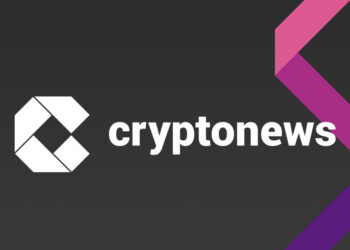In an exclusive interview with Cryptonews Podcast’s Matt Zahab, Arjun Bhuptani, a co-founder of Everclear, the first clearing layer for the Web3 ecosystem, discussed “the dirty secret” chain abstraction can solve and the incoming roll-up explosion.
He talked about Everclear’s goal of having truly permissionless liquidity everywhere, and the team’s need to rebrand from ‘Connext.’
From Connext to Everclear
For eight years, Connext had been one of the oldest running brands in the space, Bhuptani told Matt.
However, it had done so many different things that it eventually became confusing for users to follow.
People in the space would say they like Connext but “don’t know exactly what you do.”
This indicated that the team needed to “clean up” the brand. Therefore, they conducted extensive testing to find the right approach.
“But we ultimately came to the conclusion that we’re doing this fundamentally new thing,” the CEO said.
Tldr;
There is no one-size-fits-all GTM you can run forever.This is true in both web2 and web3 – the moment it becomes a "playbook", you need to find a new niche, lever, or edge to get users.
How do you do this? Talk to users and understand their *real* problems. https://t.co/ypY2e5gkdo
— Arjun
(@arjunbhuptani) June 29, 2024
The goal now was to make the brand’s story perfectly clear from the get-go. And the window for that is typically very small.
The trajectory of the rebrand depended on it.
In the end, the Everclear rebrand was successful, said Bhuptani.
Additionally, while they did lose some aspects they aimed for (such as the ENS name), they gained plenty of free advertising through large Twitter accounts “making fun” of the new name, he added.
“The Dirty Secret”
The space is fragmented, Bhuptani said. But the projects’ mutual goal is to reach a point where users don’t know or care about what chain they’re on.
This is where chain abstraction comes in.
Per the CEO, “the end goal of chain abstraction is to be able to have DEXs that look like centralized exchanges. We’ll have lending markets that look just like banks. And it’s going to be incredible.”
But the challenge is getting there. Every project has its answer, and it’s commonly a bridge.
Yet, Bhuptani argued,
“The broader trend is still the same: every single new attempt at this solution has basically fragmented the ecosystem more and not less.”
Everclear realized that the space has all the necessary pieces for a solution capable of scaling every chain and asset easily.
As everybody keeps encountering the same problems, coordination between projects is necessary.
Furthermore, most chain abstraction applications are intent-based and operated by a handful of people.
If we want this ecosystem to scale, Bhuptani said, we need to understand that the intent-based model itself is not broken. It works “super well,” doing exactly what it should.
However, the economic incentives around the model are broken. Lowering the cost and complexity of becoming a solver in these ecosystems enables more people to become solvers.
“And that is how we scale. That was the core thesis.”
TL;DR:
The Clearing Layer is the foundation of the Chain Abstraction stack, powering optimal liquidity for intent protocols & solvers.
Everclear, the first Clearing Layer, cuts cost/complexity of rebalancing solver liquidity by *up to 10x*.
Full blog: https://t.co/hZmtIZu3us pic.twitter.com/lDKDdIeb0H
— Everclear (prev Connext) (@EverclearOrg) June 3, 2024
For example, a major issue the Connext team identified is that routers’ liquidity would move towards “random long-tail chains” that users didn’t want to go to.
So, the router (aka solver) would have to rebalance liquidity. However, only a few would rebalance effectively and profitably.
“This is the dirty secret,” Bhuptani remarked.
In short, the fundamental infrastructure powering every single on-chain interaction can’t be just one large market maker.
It has to be an open ecosystem with “tons of people,” providing services for all chains, assets, and rollups – not just the top projects.
Truly Permissionless Liquidity Everywhere
Everclear’s second half of the year will be a big one. The main focus is launching the mainnet.
“We’re working on finalizing code and then heading off to audit,” Bhuptani said.
Initially, they’ll launch an alpha mainnet to ensure everything works well.
But the team’s idea is to have “truly permissionless liquidity everywhere.” They aim to create a single system that users can permissionlessly install onto the roll-up.
This can “provide the liquidity backbone on top of which it just becomes really sensible for bridges to support your ecosystem.”
Everclear is currently trying to onboard as many bridges as possible.
Introducing a chain-abstracted, 1-click bridging experience with permissionless interoperability for ezETH!
Bridge @RenzoProtocol's ezETH almost instantly using the Renzo Bridge via @hyperlane_xyz's warp routes, powered by xERC20, across 8 EVM chains, and soon beyond EVM. https://t.co/bufSEKLv9j
— Everclear (prev Connext) (@EverclearOrg) June 21, 2024
Roll-up Explosion
As for the rest of the space, Bhuptani said, he is “100% convinced” that there will be “a huge explosion of roll-ups” over the coming months.
Every major application team is either going to launch a roll-up or is seriously considering it, he argued.
“The benefits of sovereignty and of having only your own stack are really underrated,” the CEO opined. “People don’t really understand just how important that is.”
Another “guess” is that we’ll see every single major DeFi protocol building “something that requires liquidity and that closes liquidity in a single place” instead of continuing to fragment it.
Who is this take bullish for?
1. The modular thesis
2. Appchains
3. Chain Abstraction projectsWho is this take bearish for?
1. Midwit narrative chasers— Arjun
(@arjunbhuptani) June 27, 2024
Lastly, in H2, we’ll notice the blurring of the line between a chain and a roll-up.
Roll-ups will be “some systems running some logic,” posting proof of doing logic correctly to the blockchain.
And once that is accomplished, “the entirety of Reddit, without changing any of their infrastructure, becomes a roll-up. This is something that I think people don’t understand,” Bhuptani concluded.
____
That’s not all.
In this interview, Bhuptani also discussed:
- Connext’s decision to launch a new protocol and rebrand to Everclear;
- the choice of the new name ‘Everclear’;
- the difficulty and the process of rebranding in Web3, and why brands in the space are ‘super confusing’;
- crypto UX and liquidity fragmentation across chains;
- clearing layers in Web3 – increasing communication and execution between chains;
- why bridges alone can’t solve cross-chain interactions;
- what netting is: payment reconciliation done behind the scenes.
You can watch the full podcast episode here.
__________
About Arjun Bhuptani
Arjun Bhuptani is a co-founder of Everclear, the first clearing layer for the Web3 ecosystem.
He is also a co-creator of Moloch DAO, the earliest and one of the most frequently used decentralized autonomous organization frameworks.
Its goal is to help individuals and institutions coordinate around shared resources in a fair and transparent manner.
The post Arjun Bhuptani, Co-founder of Everclear, on Web3 Branding, Clearing Layers, the Power of Chain Abstraction, and Roll-ups | Ep. 348 appeared first on Cryptonews.












